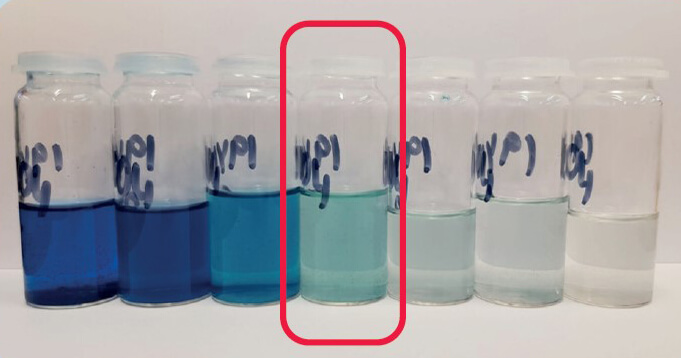Colour Removal
Color removal refers to the process of eliminating or reducing the color of a substance, typically in water or wastewater treatment. It is necessary because the presence of color in water can be aesthetically undesirable, indicate the presence of pollutants, or interfere with certain processes or applications. Here are some common methods and details about color removal:

Coagulation and Flocculation
Coagulation and flocculation are commonly used in water treatment for color removal. Chemical coagulants, such as aluminum sulfate (alum) or ferric chloride, are added to the water. These coagulants neutralize the charges on color-causing particles, allowing them to come together and form larger particles called flocs. The flocs can then be easily separated from the water through sedimentation or filtration, removing the color.
Adsorption
Adsorption is a process where color-causing substances are removed by attaching to the surface of an adsorbent material. Activated carbon is a commonly used adsorbent for color removal. It has a high surface area and a strong affinity for organic compounds, including colored molecules. As the water passes through a bed of activated carbon, the color compounds are adsorbed onto the carbon, resulting in color removal.
Oxidation
Oxidation processes can be used to remove color by chemically transforming the color-causing compounds into non-colored or less-colored forms. Common oxidizing agents include chlorine, ozone, hydrogen peroxide, and potassium permanganate. These agents react with the color compounds, breaking them down or altering their structure, thereby reducing their color intensity.
Membrane Filtration
Membrane filtration, particularly techniques like reverse osmosis (RO) and nanofiltration (NF), can effectively remove color from water. These processes utilize semi-permeable membranes with small pore sizes that can reject color-causing substances based on their size and charge. The water is forced through the membrane, while the color compounds and other contaminants are retained, resulting in color removal.
Biological Treatment
In some cases, biological treatment processes can help remove color from wastewater. Certain microorganisms and fungi have the ability to degrade or metabolize color-causing compounds. Biological treatment methods, such as activated sludge processes or biofilters, create favorable conditions for these organisms to grow and thrive, facilitating the breakdown of color compounds and reducing color intensity.
It is important to note that the selection of the appropriate color removal method depends on factors such as the nature of the color compounds, water quality parameters, regulatory requirements, and the specific treatment objectives. Different combinations of these methods or advanced treatment techniques may also be employed for efficient and comprehensive color removal, depending on the specific situation and requirements.
Color removal techniques are widely used in various industries and applications. Here are some specific uses of color removal:

Water and Wastewater Treatment
Color removal is a crucial step in water and wastewater treatment processes. It ensures the aesthetic quality of drinking water and ensures compliance with regulatory standards. Color removal is particularly important in industries such as textile manufacturing, dyeing, printing, and paper production, where wastewater often contains high concentrations of color compounds. Effective color removal techniques help protect the environment and promote sustainable water management.
Textile and Apparel Industry
Color removal is essential in textile and apparel manufacturing processes. It is often necessary to remove excess or unwanted color from textiles or garments to achieve the desired shade or colorfastness. Color removal techniques are used in color correction, color stripping, or color fading processes. This allows manufacturers to meet quality standards, improve color consistency, and reduce waste in the production of textiles and garments.
Food and Beverage Industry
Color removal techniques find applications in the food and beverage industry. Natural food pigments, such as anthocyanins or chlorophyll, can impart undesirable colors to food products. Color removal methods are employed to remove or reduce these natural pigments, achieving a desired color or appearance. This is particularly important in the production of clear beverages, colorless sauces or dressings, and color-matched food products.
Cosmetics and Personal Care Products
Color removal is utilized in the formulation of cosmetics and personal care products. Sometimes, certain raw materials or ingredients can introduce unwanted colors to the final product. Color removal techniques help eliminate or minimize these colors, ensuring the desired appearance, consistency, and stability of cosmetic and personal care formulations.
Paper and Pulp Industry
The paper and pulp industry relies on color removal techniques to produce high-quality paper products. Unwanted color compounds present in pulp can lead to undesirable coloration of paper, affecting its appearance and marketability. Color removal processes are used to decolorize the pulp, resulting in the production of white or lighter-colored paper.
Environmental Remediation
Color removal techniques are applied in environmental remediation efforts. In situations where industrial activities have caused color pollution in water bodies or contaminated sites, color removal methods can be employed to restore the natural color and appearance of water or soil. This contributes to the overall remediation and restoration of affected ecosystems.
These are just a few examples of the many uses of color removal techniques. The precise application of color removal methods varies depending on the industry, specific requirements, and desired outcomes. Color removal plays a significant role in improving product quality, meeting regulatory standards, and enhancing the aesthetic appeal of various products and environments.

